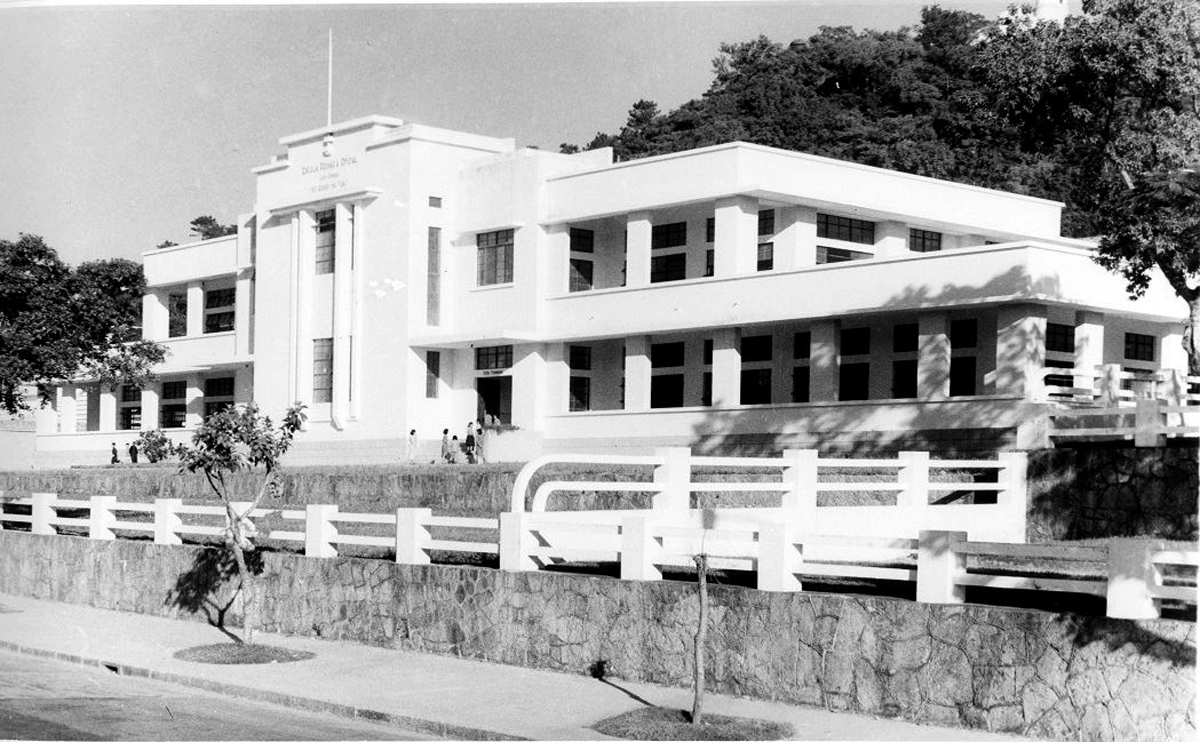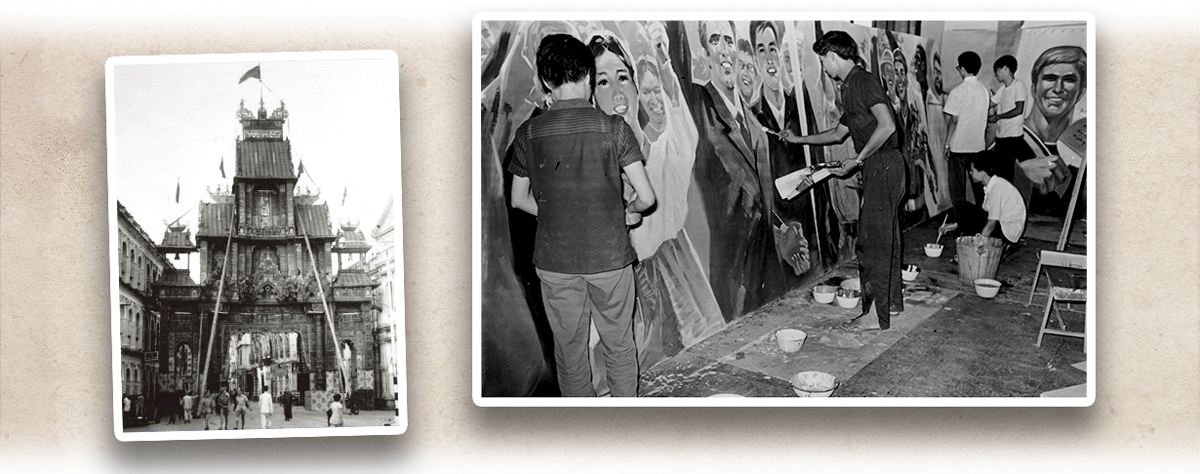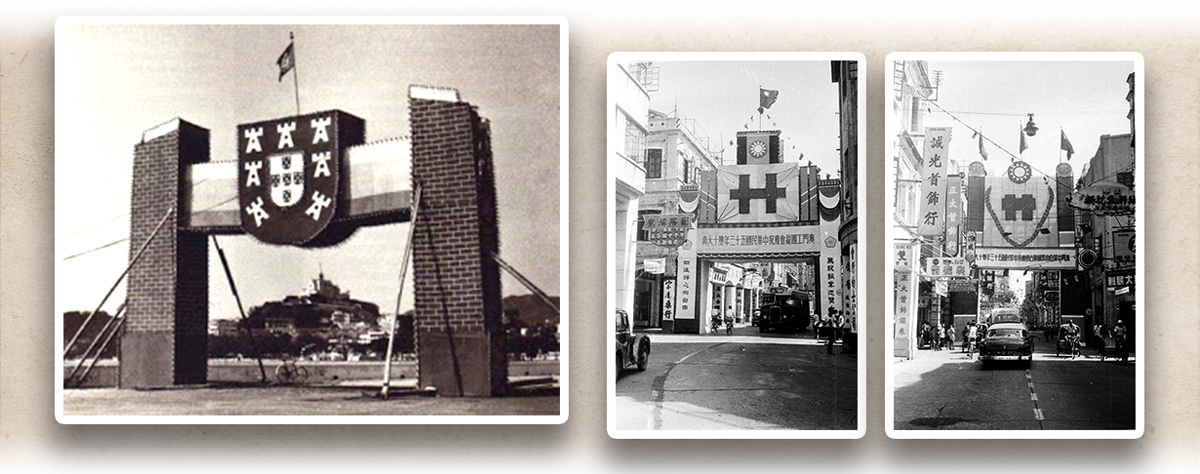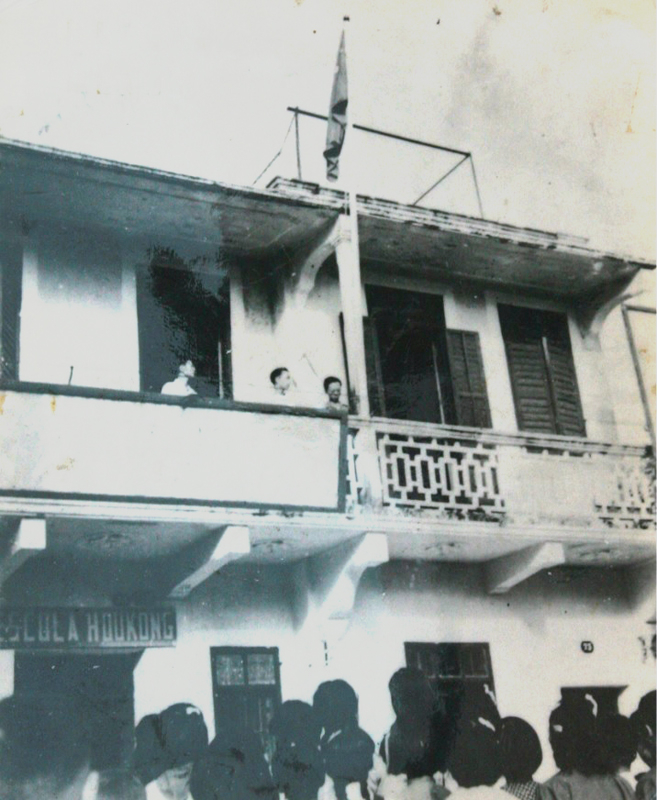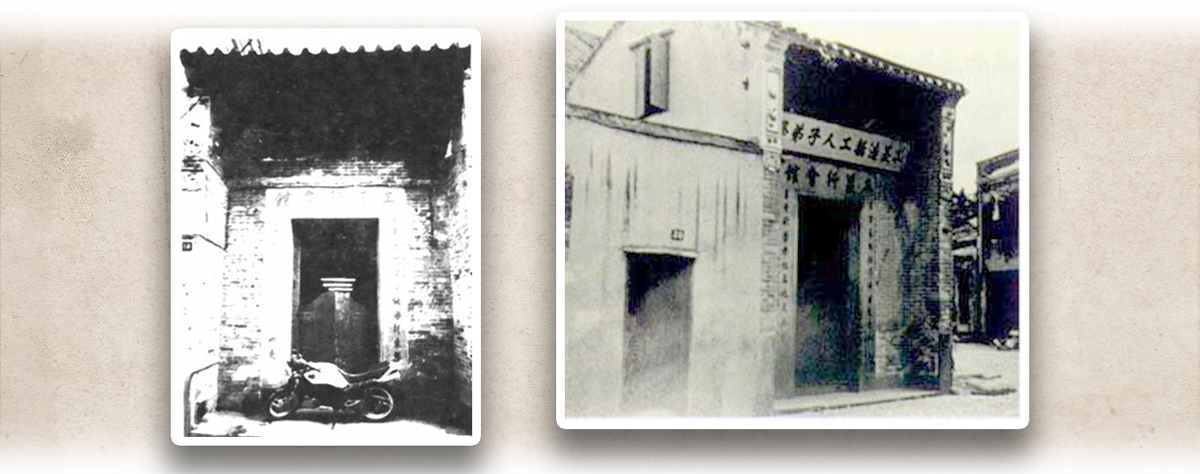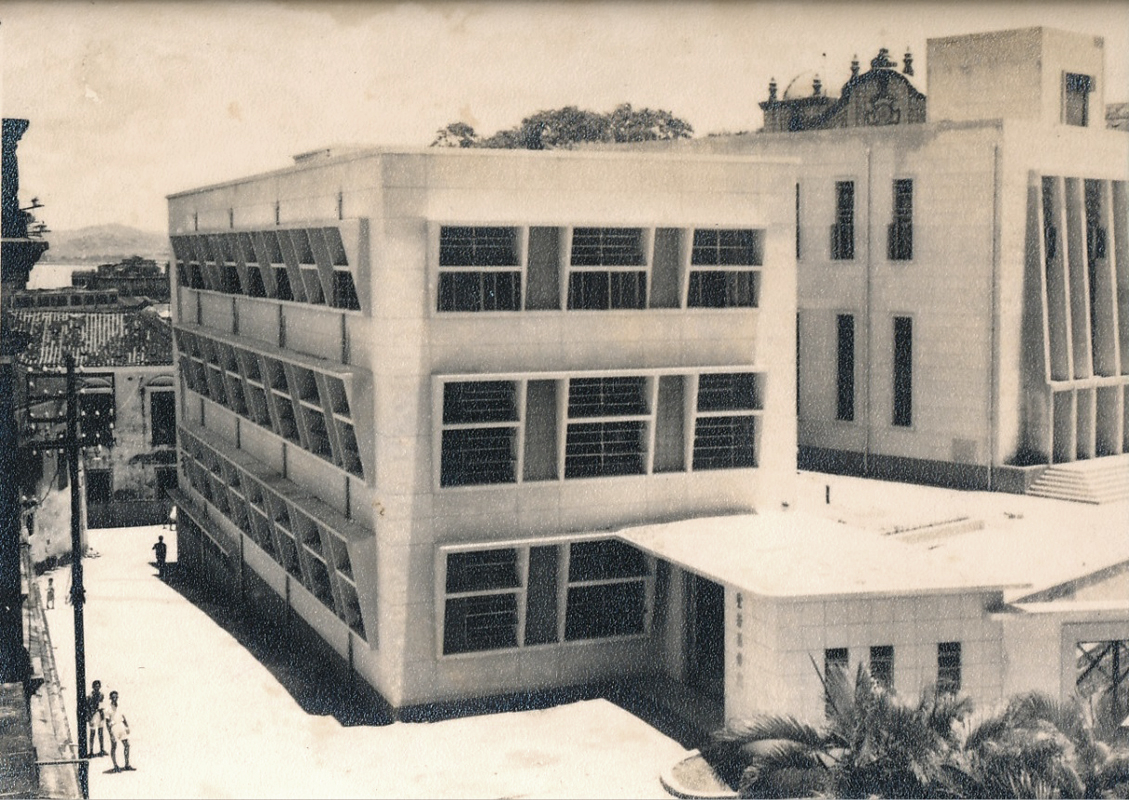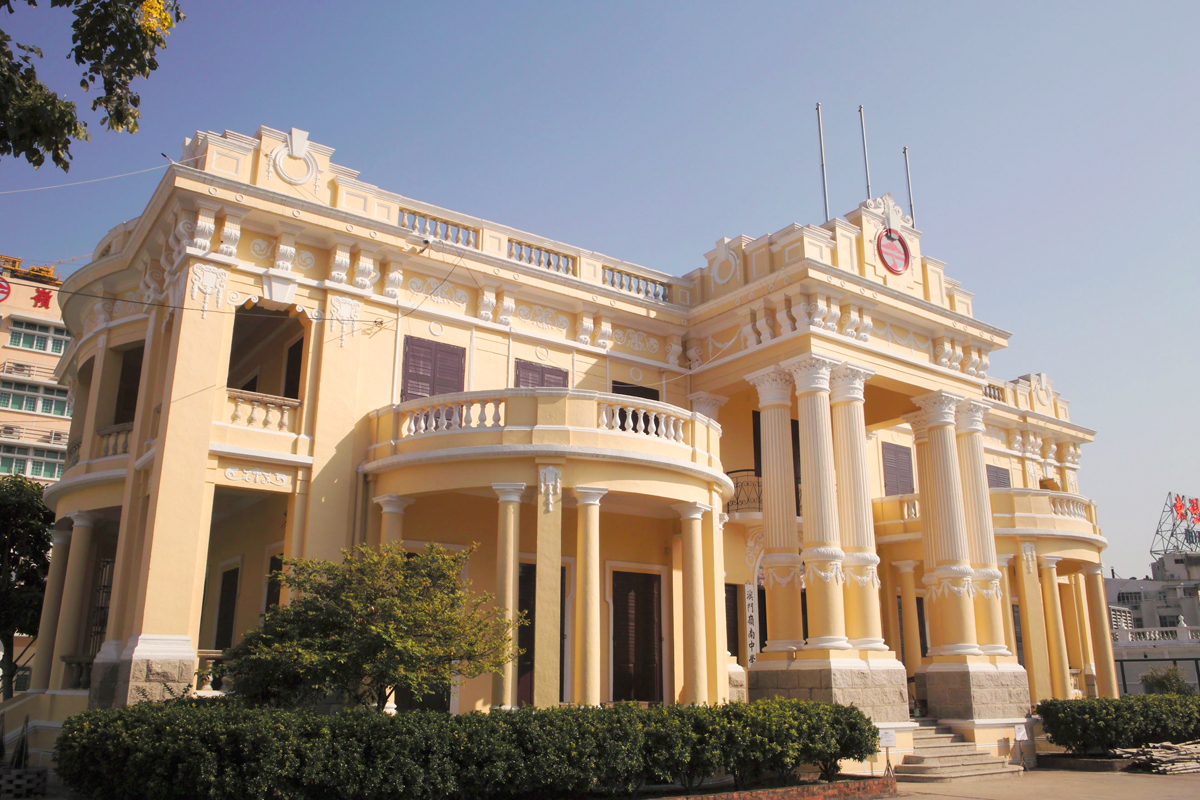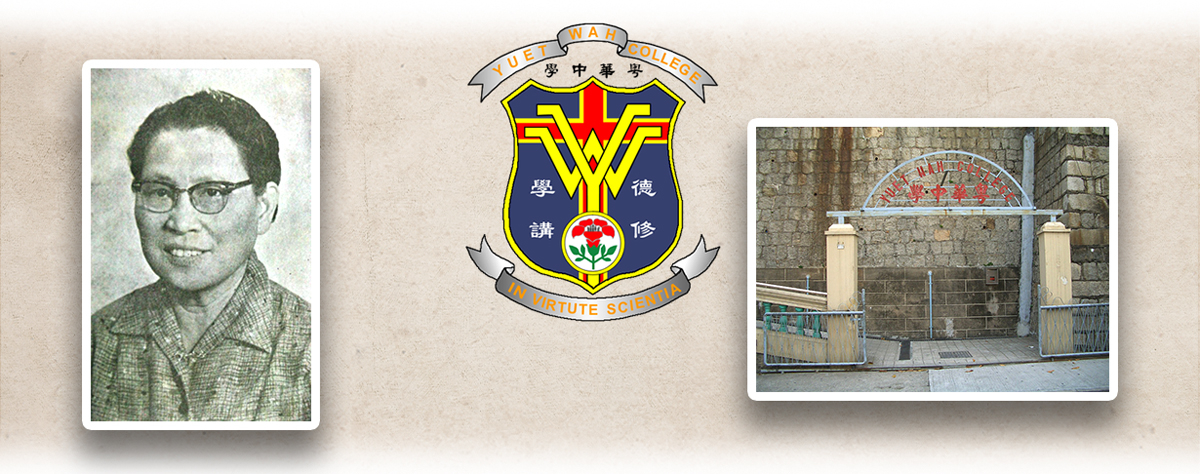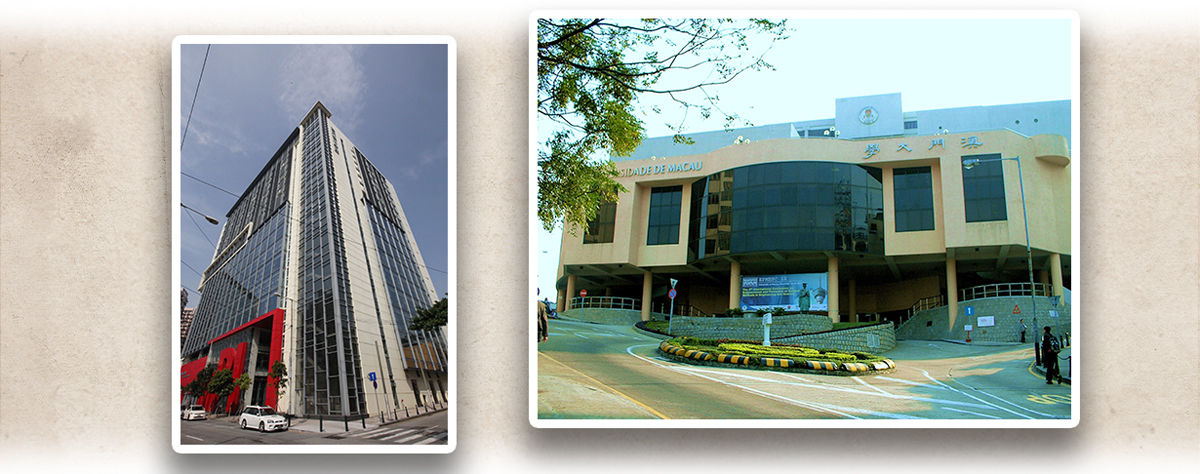Many schools in mainland China moved to Macao (Macau) to continue operations during the War of Resistance against Japanese Aggression and gradually returned to the mainland after the war. However, the immediate Chinese Civil War triggered another influx of refugees and Catholics from mainland China into Macao. Meanwhile, the competition between the Kuomintang of China (KMT, 中國國民黨) and the Chinese Communist Party (CCP, 中國共產黨) continued. All these factors prompted the vigorous education development of Macao. The increasing number of schools and students was also greatly conducive to Macao’s future development.
|
|
How did Macao’s education develop after the war? |
|
|
See answer below. |
Left: a large celebratory archway built by the Macao people voluntarily for the founding of the People’s Republic of China (PRC); Right: staff members painting on the National Day archway. (The two photos were provided by the Macau Artist Society, cited from “Macau Memory”, Macao Foundation)
Different archways emerged on Macao’s streets every October from the 1950s to the 1960s. There were archways celebrating the PRC National Day on 1 October, the Republic Day of Portugal on 5 October, and the Double Tenth Day on 10 October. These unique installations on Macao’s streets reflected the then politics. The postwar political situation affected various aspects of Macao, including its education development.
In addition to the archway celebrating the PRC National Day, the Portuguese Macao government and pro-KMT organisations also set up their own celebratory archways in Macao. Left: the archway for the Republic Day of Portugal; Middle and Right: the archways for the Double Tenth Day erected by pro-KMT organisations.
Macao’s education was influenced by the KMT-CCP competition, as well as the governance of the Portuguese Macao government after the war. The photo shows Hou Kong Middle School raising the five-star red flag on the PRC National Day on 1 October 1949. (Collected by Hou Kong Middle School, provided by the Chinese Educators Association of Macau, cited from “Macau Memory”, Macao Foundation)
Many trade unions in Macao ran schools for their members’ children since the 1950s. From left to right: the main entrance of the Shipyard Workers Association of Macao, and the Shipbuilders’ Children School in it.
The school building of Escola Estrela do Mar in the 1950s. Escola Estrela do Mar was founded in Zhaoqing (肇慶), Guangdong Province (廣東), in 1917 by the Society of Jesus (or the Jesuits) but suspended in 1950. The Jesuits found a large number of out-of-school children in Macao. Therefore, it reopened the school in 1955 and the school has been in operation since then. (Collected by St. Joseph’s Seminary in Macao, provided by Macau Documentation and Information Society, cited from “Macau Memory”, Macao Foundation)
Commemorative stamps for the centenary of Sheng Kung Hui Choi Kou School Macau. In addition to trade unions and Catholic churches, there were also Protestant groups running schools in postwar Macao. Sheng Kung Hui Choi Kou School Macau, formerly known as Chi To Church Kindergarten, established a junior secondary school in 1946 to provide secondary education.
Sir Robert Ho Tung of Hong Kong donated to the Portuguese Macao government to build a government school and a Chinese-Portuguese library in 1949. The school was named Escola Primária Oficial Luso-Chinesa Sir Robert Ho Tung after consulting the donor.
Lingnan Middle School contributed to Macao’s education during and after the war.
Lingnan Middle School, founded in Guangzhou (廣州) in 1919, was originally Tongzhi Primary School (通志小學) affiliated to Canton Christian College (present day Lingnan University). It was renamed Guangzhou Lingnan University Xiguan Branch in 1926 and added a junior middle school (three-year junior secondary education) in 1927. It then moved to Macao during the War of Resistance in 1937. The school added a senior middle school (three-year senior secondary education) and has been known as Lingnan Middle School since 1947.
From the left: Macao educator Madam Liu Fung-kei, the badge of Yuet Wah College, and the former main entrance of Yuet Wah College. Madam Liu, who founded and managed Yuet Wah College, made important contributions to Macao’s education before and after the war.
Yuet Wah College was founded by Madam Liu Fung-kei and another educator Madam Tam Yee-man in Guangzhou in 1925, and was moved to Macao in 1928. The operation of Yuet Wah College was handed over to the Salesians of Don Bosco in 1942 when the situation changed after the outbreak of the Pacific War in December 1941. Madam Liu returned to Guangzhou to engage in wartime education after the Salesians of Don Bosco took over Yuet Wah College and was back to Macao to continue her education career after the war. During her years as a teacher in Guangzhou Xiehe (協和) High School, Choi Kou School, Hou Kong Middle School and other schools, she set up evening colleges after class to tutor English for young people. Unfortunately, the beloved Madam Liu died in a car accident at the age of 62.
Macao’s primary and secondary education development took off after the war, which laid the foundation for the city’s tertiary education development in the future. Left: Macao Polytechnic Institute founded in 1981; Right: the main entrance of the University of Macau. The University of East Asia, the predecessor of the University of Macau, was founded in 1981 and renamed the University of Macau in 1991.
|
|
How did Macao’s education develop after the war? |
|
|
The KMT and the CCP both established trade unions and groups in Macao after the war. These organisations set up schools to offer free education to poor children until the December 3rd Incident in 1966. In addition to trade unions and organisations, Macao churches also set up schools to accommodate local civilians and the new influx of refugees during the Chinese Civil War. Relief supplies were provided to students as well. Meanwhile, the Portuguese Macao government resumed the operations of government schools and ran private schools with Portuguese communities. |
Photo courtesy of Mr. Alex Lou, Vice Chairman of The Heritage Society (picture 7), Macao Foundation (pictures 1, 3, and 5), Fotoe (pictures 8 and 10), and misc. photo sources.




